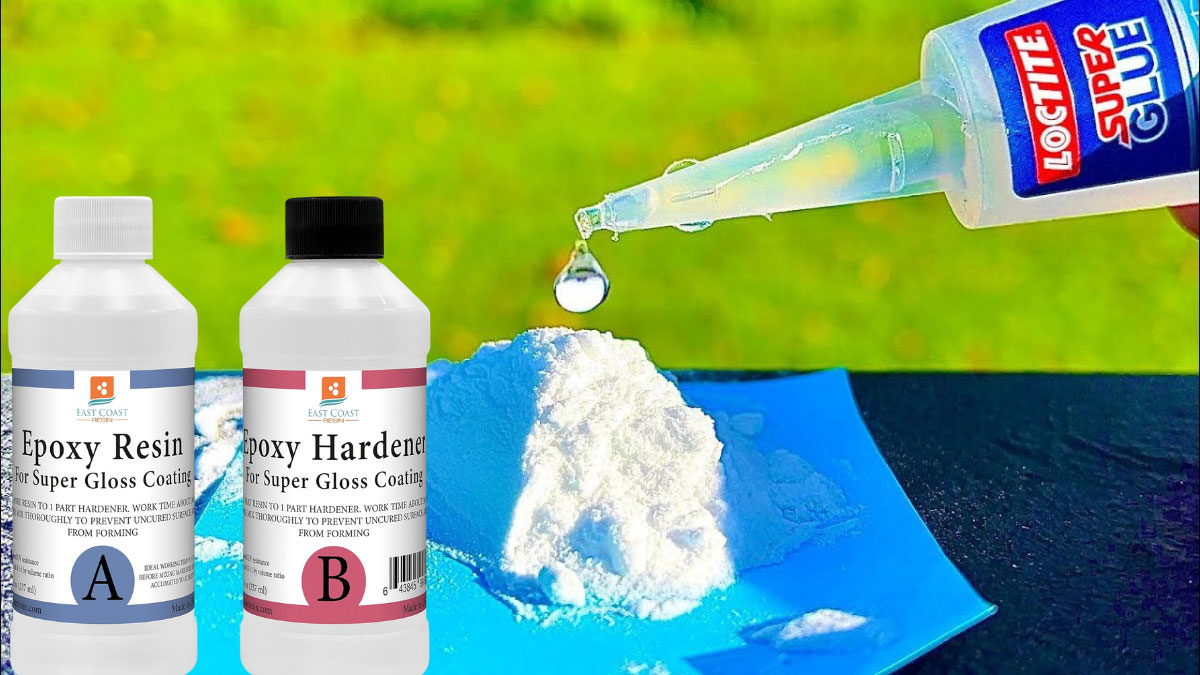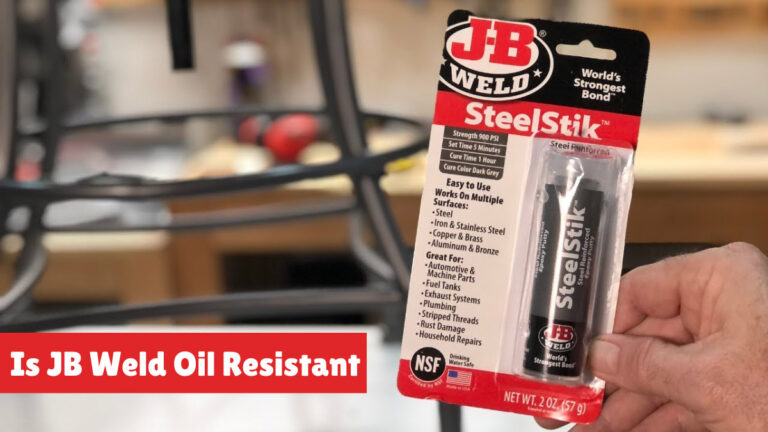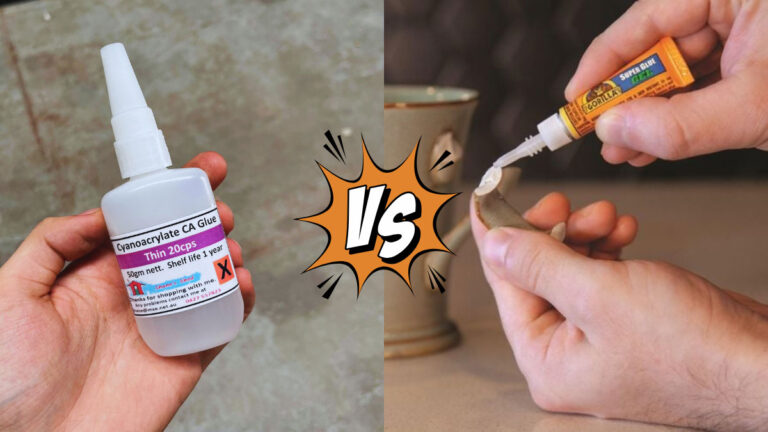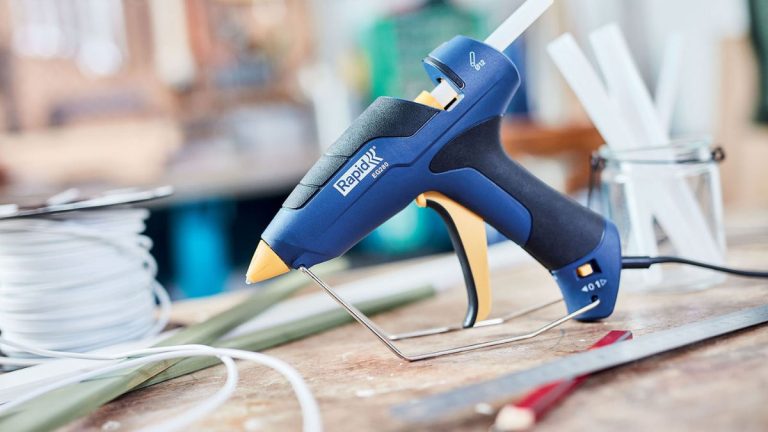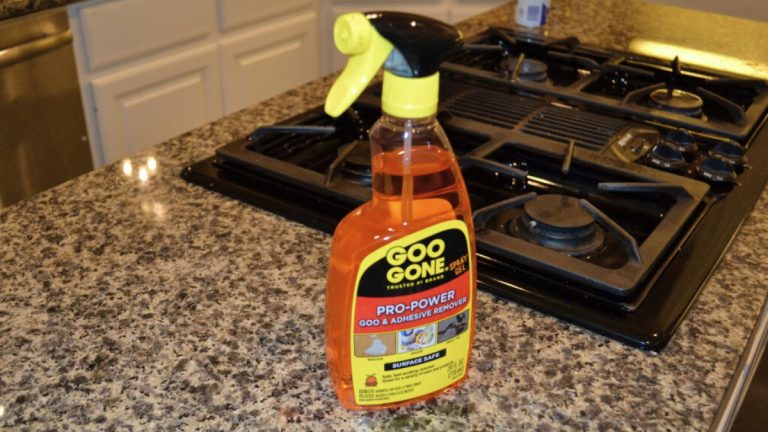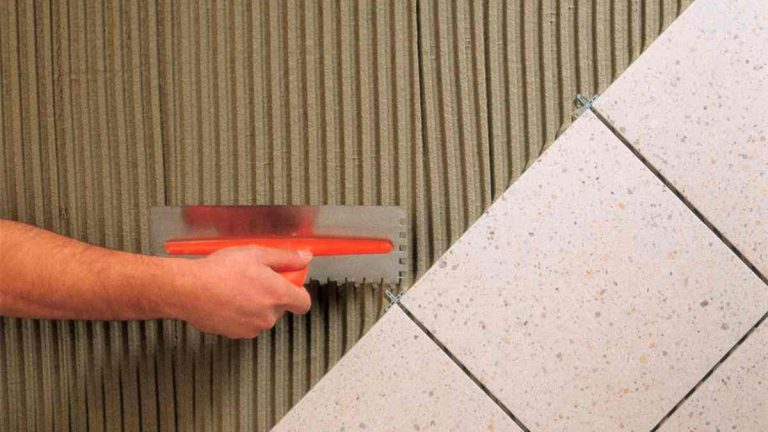Super Glue and Baking Soda vs Epoxy: Best Adhesive for DIY Projects
When it comes to quick fixes and DIY projects, choosing the right adhesive can make all the difference. You might’ve heard about the powerful combination of super glue and baking soda, but how does it stack up against trusty epoxy? Both have their strengths and specific uses, but understanding their differences can save you time and frustration.
Super glue and baking soda create a fast-acting bond that’s perfect for small repairs and intricate projects. On the other hand, epoxy offers durability and versatility for more demanding tasks. Knowing when to use each can ensure your projects are not only completed efficiently but also stand the test of time.
Key Takeaways
- Super glue with baking soda offers rapid curing and enhanced strength, making it ideal for quick repairs and intricate projects.
- Epoxy provides superior durability and chemical resistance, making it suitable for long-term, demanding tasks across various industries.
- Super glue and baking soda excel in gap filling and quick fixes but might not be as durable over time compared to epoxy.
- Epoxy requires precise mixing and longer curing times, but it delivers a strong, versatile bond that withstands environmental factors better.
- Understanding the strengths and appropriate applications of each adhesive helps in choosing the right one, ensuring efficient and lasting results for your projects.
- Safety precautions are essential when handling both super glue with baking soda and epoxy, including wearing protective gear and working in well-ventilated areas.
Understanding Super Glue and Baking Soda
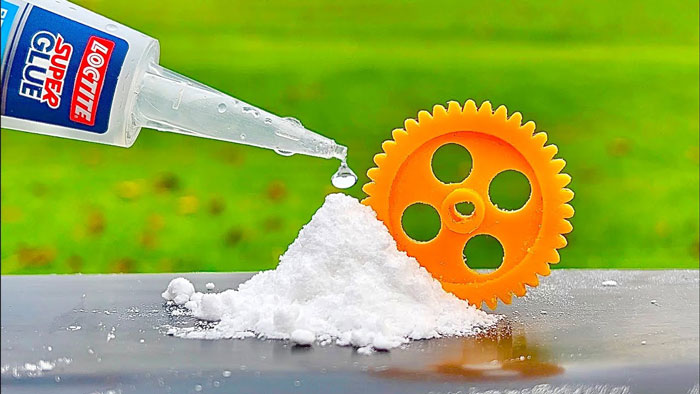
What Is Cyanoacrylate?
Cyanoacrylate, commonly known as super glue, is a quick-curing industrial adhesive. It bonds almost instantly upon contact with water ions, which can be latent in the atmosphere. This makes cyanoacrylate one of the fastest curing adhesives available. It is valued for its exceptional mechanical strength and ability to bond with various materials, including plastic, metal, wood, and even human skin.
Key Terms
- Cyanoacrylate: A fast-curing industrial adhesive known for its mechanical strength.
- Water Ions: Reactive elements in the atmosphere that trigger the bonding process in cyanoacrylate.
How Baking Soda Enhances Super Glue
When baking soda is added to super glue, it significantly enhances the adhesive properties in several ways:
- Faster Curing Time: Baking soda accelerates the curing process of super glue. The bicarbonate molecules in baking soda react with cyanoacrylate to create a reactive ion that facilitates the formation of stronger polymer chains. This reaction makes the adhesive cure almost immediately.
- Increased Strength: The combination of super glue and baking soda results in a stronger bond. The activated polymer creates a dense network that can withstand higher stress and strain compared to super glue alone.
- Improved Gap Filling: Adding baking soda to super glue enhances its gap-filling capability. The mixture can bridge small gaps and uneven surfaces, making it ideal for repairing items like ceramics, plastics, and wood.
| Feature | Super Glue Only | Super Glue with Baking Soda |
|---|---|---|
| Curing Time | Instant to a few seconds | Almost instant |
| Bond Strength | High | Very high |
| Gap Filling | Limited | Enhanced |
| Applications | Plastic, metal, wood, skin | Plastic, metal, wood, ceramics |
Understanding the combined properties of super glue and baking soda helps you make informed choices for quick fixes and DIY tasks, ensuring durability and precision in your projects.
Understanding Epoxy
Epoxy serves as a versatile adhesive for complex tasks, offering significant durability. Composed of two main parts, epoxy’s applications span various industries and materials.
Composition and Uses of Epoxy
- Epoxy Resin and Hardener: Epoxy consists of two components. The resin is the base, and the hardener catalyzes the curing process. When mixed, they undergo a chemical reaction, forming a hard, durable bond.
- Applications:
- Construction: Frequently used in building structures and repairing concrete.
- Automotive: Essential for body repairs and component assembly.
- Electronics: Used for potting and encapsulating electronic components to protect them from moisture and mechanical stress.
- Marine: Applied in boat building and repairs due to its water resistance.
Strengths and Weaknesses of Epoxy
- Strengths:
- High Durability: Epoxy provides a robust bond that withstands mechanical stress and environmental factors.
- Chemical Resistance: Resistant to chemicals, oils, and solvents, making it suitable for challenging environments.
- Versatility: Bonds well with various materials such as metals, plastics, and wood.
- Gap-Filling: Effective at filling gaps and voids due to its thick consistency.
- Weaknesses:
- Longer Curing Time: Takes longer to cure compared to super glue and baking soda. Curing can range from several hours to days, depending on the formulation and environmental conditions.
- Mixing Precision: Requires precise mix ratios of resin and hardener for optimal results. Incorrect mixing can weaken the bond.
- Temperature Sensitivity: Temperature variations can affect curing time and bond strength. Some formulations may only cure effectively within a specific temperature range.
| Feature | Epoxy | Super Glue and Baking Soda |
|---|---|---|
| Components | Resin and Hardener | Cyanoacrylate and Baking Soda |
| Curing Time | Several Hours to Days | Almost Instant (with Baking Soda) |
| Durability | Very High | Moderate |
| Applications | Construction, Automotive, Electronics, Marine | Small Repairs, Immediate Fixes |
| Chemical Resistance | High | Low |
| Mixing Requirement | Precise Ratio Needed | No Mix Required |
Understanding the strengths and weaknesses of epoxy allows you to make informed choices for your project. Whether needing a fast bond with super glue and baking soda or a durable bond with epoxy, select the adhesive that best suits the material and task.
Comparing Adhesive Strength and Durability
Choosing the right adhesive is crucial for successful repairs and projects. This section compares super glue and baking soda with epoxy, focusing on their adhesive strength and durability.
Super Glue and Baking Soda
Curing Time:
- Accelerated Curing: Adding baking soda to super glue results in an almost immediate hardening due to the reaction between bicarbonate molecules and cyanoacrylate.
- Quick Repairs: This aspect makes it ideal for quick fixes but careful application ensures a strong bond.
Adhesive Strength:
- Enhanced Bond: The combination of super glue and baking soda forms longer polymer chains, creating a stronger bond than super glue alone.
- Variable Strength: The bond’s strength depends on surface preparation and the quantity of baking soda used.
Durability:
- Strong Bond: While the bond is strong, it may not retain its durability as well as epoxy over extended periods.
- Long-Term Use: The bond might degrade faster in challenging conditions compared to epoxy.
Epoxy
Curing Time:
- Longer Curing: Epoxy has a longer curing time than super glue and baking soda, taking several hours to fully harden. This curing time allows for adjustments and precise placements.
- Time Investment: The longer curing process requires patience but results in a robust bond.
Adhesive Strength:
- High Strength: Epoxy forms a strong, resilient bond suitable for various materials, offering high resistance to stress.
- Versatile Bonding: It’s ideal for complex projects requiring strong, durable bonds.
Durability:
- Superior Durability: Epoxy creates a highly durable bond, resistant to various environmental factors such as heat, moisture, and chemicals.
- Long-Lasting: The durable nature of epoxy makes it suitable for long-term applications across different industries.
| Adhesive | Curing Time | Adhesive Strength | Durability |
|---|---|---|---|
| Super Glue and Baking Soda | Almost Immediate | Strong | Moderate, may weaken over time |
| Epoxy | Several Hours | Very Strong | High, resistant to environmental factors |
Use these comparisons to determine the best adhesive for your specific needs, ensuring the most effective and lasting results based on the requirements of your project.
Practical Applications
In practical uses, choosing the right adhesive can significantly impact the success of your repair projects. This section delves into the best uses for super glue and baking soda versus epoxy.
Best Uses for Super Glue and Baking Soda
Super glue combined with baking soda offers rapid bonding and strength enhancement. Here’s how it excels:
- Faster Curing Time: Mixing baking soda with super glue speeds up the curing process. The baking soda’s bicarbonate molecules react with cyanoacrylate, creating a fast-reacting ion that accelerates bonding.
- Gap Filling: This mixture provides effective gap-filling for surfaces. It forms a cement-like consistency, enhancing the bond’s durability.
- Plastic Repairs: Ideal for mending cracked plastic materials, it bonds more efficiently with plastic than plain cyanoacrylate.
- Quick Repairs: Perfect for fast surface repairs in high-traffic areas due to its swift curing time and amplified strength.
Best Uses for Epoxy
Epoxy is favored for situations requiring long-lasting bonds and resilience. Consider these scenarios:
- Permanent Bonds: Epoxy creates robust, permanent bonds, suitable for applications where durability is essential.
- Structural Support: Often used in construction and automotive industries for its ability to support structural loads.
- Chemical Resistance: Effective in environments exposed to harsh chemicals, making it a top choice for marine and industrial use.
- Versatile Applications: Epoxy’s flexibility in filling gaps, bonding different materials, and enduring various environmental factors broadens its use range.
| Feature | Super Glue and Baking Soda | Epoxy |
|---|---|---|
| Curing Time | Instant to a few seconds | Several hours |
| Bond Strength | High for quick fixes | Extremely high |
| Gap Filling Ability | Good | Excellent |
| Compatibility with Plastics | Very High | Moderate to High |
| Durability Over Time | Moderate | High |
| Chemical Resistance | Low | High |
| Temperature Sensitivity | High | Moderate to High |
By understanding the strengths and specific applications, you can make informed decisions for your repair projects. Choose super glue and baking soda for quick, efficient fixes in small areas or when working with plastics. Opt for epoxy when you need long-lasting, durable bonds in complex applications or harsh environments.
Safety Considerations
Adhesives like super glue, baking soda, and epoxy demand careful handling due to their chemical properties.
Handling Super Glue and Baking Soda
Cyanoacrylate, or super glue, combined with baking soda accelerates the curing process but also poses specific risks.
Safety Equipment:
- Gloves: Wear nitrile gloves to avoid skin contact. Latex isn’t recommended as cyanoacrylate can bond rapidly with it.
- Eye Protection: Use safety glasses to protect against accidental splashes.
Working Environment:
- Ventilation: Ensure good ventilation. Super glue fumes can irritate respiratory passages.
- Surfaces: Work on protected surfaces to avoid accidental bonding and spills.
First Aid Measures:
- Skin Contact: Soak the bonded area in warm, soapy water and gently peel apart. Do not force.
- Eye Contact: Rinse with water and seek medical attention immediately.
- Inhalation: Move to fresh air and seek medical attention if discomfort persists.
Usage Tips:
- Use sparingly. Excess glue increases curing time.
- Apply baking soda immediately after the glue for best results.
- Store in a cool, dry place to maintain efficacy.
Handling Epoxy
Epoxy’s use involves mixing resin and hardener, leading to specific handling procedures.
Safety Equipment:
- Gloves: Wear chemical-resistant gloves, such as nitrile, to protect against skin irritation.
- Eye Protection: Safety goggles are essential. Epoxy can cause severe eye irritation.
- Respirator: Use a mask to avoid inhaling fumes, particularly in poorly ventilated areas.
Working Environment:
- Ventilation: Work in a well-ventilated space. Some epoxies release volatile organic compounds (VOCs).
- Cleanliness: Maintain a clean workspace. Contaminants can weaken the bond.
First Aid Measures:
- Skin Contact: Wipe off with a dry cloth before washing with soap and water. Consult medical advice if irritation continues.
- Eye Contact: Rinse thoroughly with water and seek immediate medical attention.
- Inhalation: Move to an area with fresh air, and consult a doctor if symptoms persist.
Usage Tips:
- Mix resin and hardener according to product instructions for optimal results.
- Use within the working time frame provided by the manufacturer.
- Allow full curing time (usually 24 hours) for the bond to reach maximum strength.
Safety and Handling Comparison Table
| Feature | Super Glue and Baking Soda | Epoxy |
|---|---|---|
| Protective Gear | Nitrile gloves, safety glasses | Chemical-resistant gloves, safety goggles, respirator |
| Ventilation | Necessary due to fume emission | Essential due to VOCs |
| First Aid – Skin | Warm, soapy water soak | Wipe, then wash with soap and water |
| First Aid – Eyes | Rinse, seek medical help | Rinse, seek immediate medical help |
| First Aid – Inhalation | Move to fresh air | Move to fresh air |
| Working Surface | Protected from accidental bonding | Clean, uncontaminated |
Key Terms
- Cyanoacrylate: Main component of super glue, known for rapid bonding.
- Volatile Organic Compounds (VOCs): Chemicals emitted as gases from certain solids or liquids; higher concentrations can cause health issues.
Summary/Action Point
Adopt proper safety measures and handling practices when using super glue with baking soda or epoxy. Equip yourself with suitable protective gear, ensure proper ventilation, and follow first-aid recommendations if accidents occur. By doing so, you minimize risks and maximize the effectiveness of these powerful adhesives.
Conclusion
Choosing between super glue and baking soda or epoxy depends on your specific needs. If you need a quick fix with fast curing times, super glue and baking soda are ideal. For projects requiring durability and resistance to environmental factors, epoxy is the better choice.
Understanding the strengths and limitations of each adhesive ensures you select the right one for the job. Always follow safety protocols to protect yourself while achieving the best results. With the right adhesive and proper handling, your repair projects will be both efficient and long-lasting.
Frequently Asked Questions
What happens if you mix super glue and baking soda?
Mixing super glue with baking soda causes the glue to catalyze almost immediately. This reaction enhances the adhesive properties, accelerates curing time, increases bond strength, and improves gap-filling capabilities, making it ideal for quick fixes and small repairs.
What solvent weakens epoxy?
Acetone or paint thinner can weaken epoxy by significantly reducing its viscosity. However, using these solvents in excess can compromise the epoxy’s curing process and overall integrity. It’s recommended to add no more than 10% solvent to your epoxy mix.
What is the strongest glue for resin?
Cyanoacrylate (CA) glue, commonly known as super glue, is considered one of the strongest adhesives for bonding resin parts. It sets relatively quickly and forms a robust bond suitable for various applications.
What makes super glue even stronger?
Super glue, or cyanoacrylate, becomes stronger when exposed to moisture. The presence of water or moisture accelerates the polymerization process, where individual molecules join together to form long chains, creating a strong adhesive bond.
What are the disadvantages of epoxy glue?
Epoxy glue has a longer curing time, often taking several hours to fully set, which can be inconvenient for fast-fix applications. Additionally, its thick and sticky nature makes it messy to apply and challenging to remove from surfaces and skin.
When should I use epoxy instead of super glue?
Use epoxy for tasks requiring a permanent, highly durable bond, especially in environments with chemical exposure or significant structural stress. Epoxy is ideal for construction, automotive repairs, and projects that benefit from its gap-filling capabilities and resistance to environmental factors.

